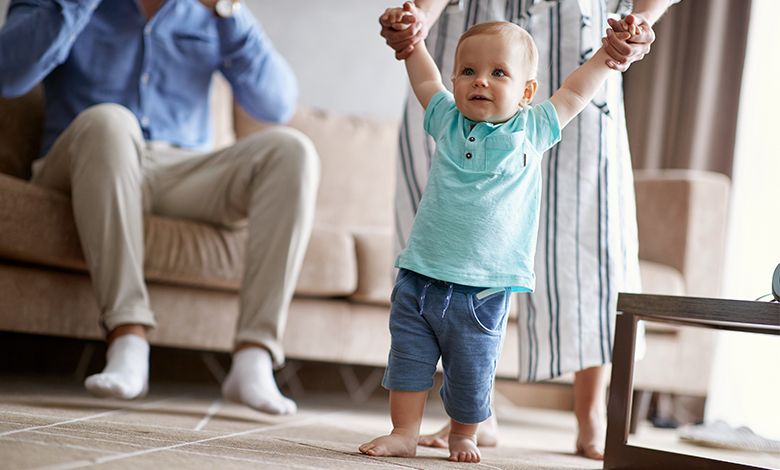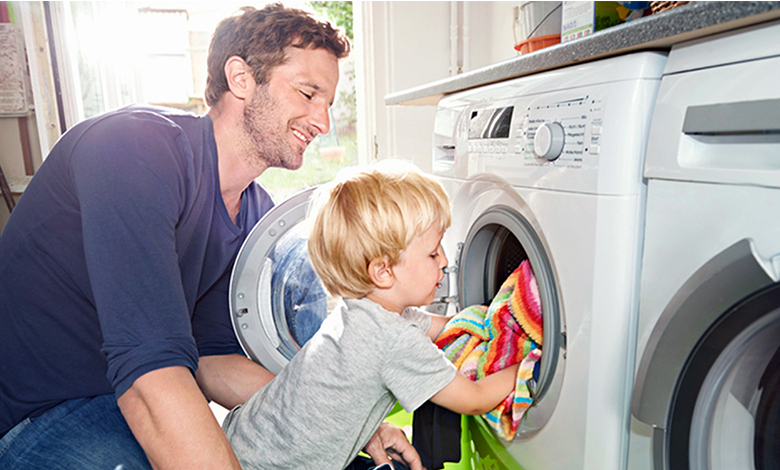- Risk-taking builds resilience
- Children have an innate desire to challenge themselves
- We need to give kids space to try – and fail at – new things
How healthy risk-taking benefits our children

Key points
Dr Justin Coulson - Leading Parenting Expert
As parents, it can be tough to give our children space to take risks, even in controlled environments. When you see your little one struggling to navigate a few stairs or looking unsteady on their feet, you want to instinctively reach out and protect them. But doing so may be a disservice to their growth. Allowing children to take healthy risks is critical for the development of resilience. This lets kids achieve positive developmental outcomes when they experience challenges, setbacks or trials. It’s a quality we should strive to instil in our children, because without it they will always struggle with adversity. We want our children to think, “Wow, this is hard. Let me at it.” Not, “This is hard. Get me out of here.”
Nurturing autonomy
Strategic risk builds confidence and capability. It builds autonomy, which is a basic psychological need. We have an innate desire to be able to control our environments and actions – and that’s true of children, as well. What we should do is encourage them to be curious and explore the world around them. While this can sometimes lead to difficulties and even danger, for the most part, these risks are going to occur with parental supervision. Our job is to watch them and only dive in at the last second – or even be there to give them a big hug once they’ve pushed themselves a little too far.
Moderate fear enables growth
Even when they’re young, children seek out risk. One of the world’s foremost play researchers, Peter Gray, has observed this. “They seem to be dosing themselves with moderate degrees of fear, as if deliberately learning how to deal with both the physical and emotional challenges of the moderately dangerous conditions they generate.” The critical thing here is that it’s the child who is generating these conditions – they’re the ones going to the stairs or chasing the dog around the room. These activities help to build competence and capability. They teach them how to be resourceful and creative. It also helps children learn about consequences. When they do something slightly dangerous and get hurt, they think, “Oh, that hurt. I won’t do that again.” Or, “Next time, I’m going to do it like this.” Peter Gray has also said, “All such activities are fun to the degree that they are moderately frightening. If too little fear is induced, the activity is boring. If too much is induced, it becomes no longer play but terror. Nobody but the child himself or herself knows the right dose.”I love this quote because it highlights that the addition of risk is mentally stimulating. Our kids don’t want to hold on to the coffee table in the living room; they want to try and walk out the door. If you’re stepping in and intervening, you’re reducing your child’s capacity to grow. The more you shield your children from challenging circumstances, the less capable they are of ascertaining how risky a situation is in the future.
What does healthy risk taking look like?
Encourage your child to choose their activities and find their limits. When you take them outside, let them explore and discover things for themselves. Now, I’m not saying you should drop your child on an ant’s nest, but if an ant runs across their hand, don’t freak out – just gently lift it up and blow it away. Similarly, let them put sand in their mouth. They’re going to work out pretty quickly that it’s not for eating.When they’re older, let them climb up the slide the wrong way – as long as they’re not disturbing other kids’ play. And if there are other kids there, maybe let them have the opportunity to navigate a challenging social situation with gentle supervision.
A balancing act
I like to use the analogy of a balance beam. During physical education in high school, we used to try and walk across a beam without falling off. We had someone either side acting as spotters. Parents are the spotters and there are 3 common approaches we can use when we’re trying to help our children navigate the balance beam of life. The first is the ‘tough love’ approach. If your child is struggling to maintain their balance or they fall and hurt themselves, you say, “Toughen up. Up you get. Life isn’t for losers, so get on with it.” There’s no real evidence this is a healthy and positive approach for our children, but it’s common. The second, which is increasingly occurring, is what’s called ‘helicopter’ parenting. This is the parent who watches their child wobble a little on the beam and they jump on and walk them across. This approach doesn’t work, because we can’t carry our children through life. They’ve got to figure things out on their own. The third approach – and the one I advocate for – is when we walk beside our child with our arms outstretched, not to catch them but to recognise when they might fall and to gently support them in regaining their balance and composure. We help children build resilience by acting as a support system they can lean on while they work out where to go next, and that’s one of life’s essential lessons.
Related pages

Get in touch with our Careline experts
When your little one is unhappy or unwell you want reliable support from a trusted source. Our Careline team of nutritionists, dietitians and midwives specialise in infant and child health, offering free nutrition, feeding and product information.
Every feeding journey is unique
Not every parent can produce breast milk. No matter what choice you make, we will support your unique feeding journey.
We at Nutricia believe in providing the best nutrition for babies, which is why we recognise breast milk is uniquely superior for babies as it provides many benefits. It is important that mums have a healthy diet to support breastfeeding. A decision not to breastfeed, or partial bottle feed, may reduce breast milk supply making it difficult to reverse. The cost and social implications of using feeding methods should be considered. Always seek professional advice about feeding your baby. Ensure formula is used as directed as improper use can affect baby’s health.
REMEMBER: The information on this page is general only. If you have any concerns about your baby’s poo or questions about constipation or any other health concerns, please speak to a healthcare professional, like a Pharmacist, GP or Maternal Child Health Nurse.



